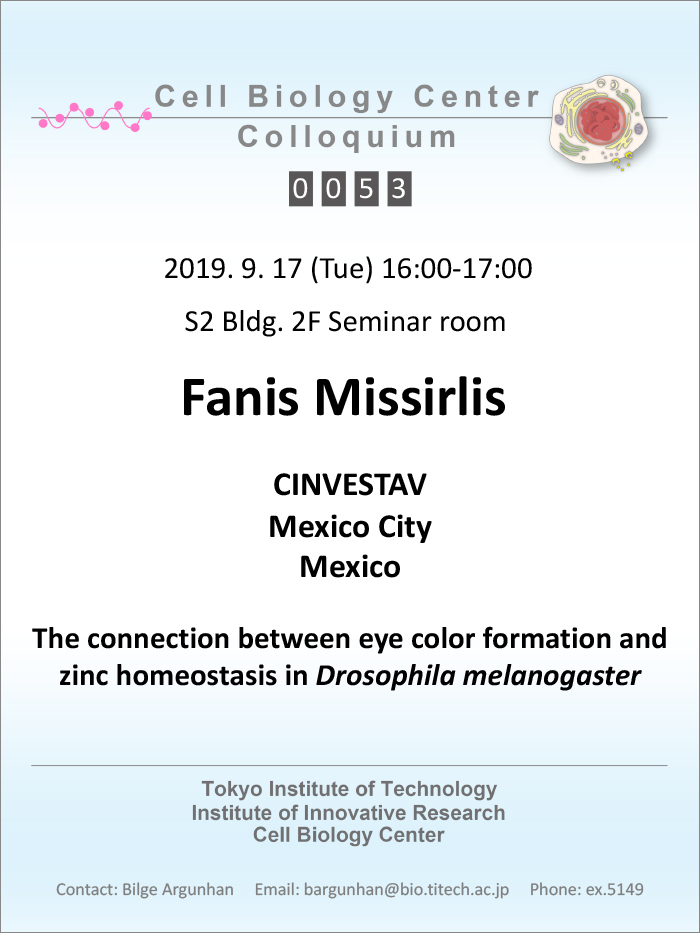Event Information
- Date
- Tuesday, September 17, 2019
- Time
- 16:00 - 17:00
- Venue
- Suzukakedai Campus, Tokyo Institute of Technology

Building S2, 2F Seminar room
- Contact
Bilge Argunhan PhD
Cell Biology Center, Institute of Innovative Research
E-mail : bargunhan@bio.titech.ac.jp
Program
- Speaker
- Dr. Fanis Missirlis (CINVESTAV, Mexico)
- Title
- The connection between eye color formation and zinc homeostasis in Drosophila melanogaster
- Abstract
Two thirds of the total zinc content of the adult fly /Drosophila melanogaster/ is found in zinc storage granules of the Malpighian tubules (1). The Malpighian tubules regulate the ionic composition of the insect’s hemolymph, a physiological function relocated to the kidneys of vertebrate animals (2). The zinc storage granules are lysosome-related organelles that have been called zincosomes in other cell types and are formed using the homologous machinery required for the biogenesis of pancreatic beta cell granules or mossy fiber synaptic vesicles (3). In Drosophila and other insects, a specialized zinc transporter homologous to ZnT3 and ZnT8 has been recruited to these specialized subcellular structures (1). I will present unpublished work aiming to unravel how it is that insects regulate zinc storage. Our findings implicate kynurenine production in the fat bodies, which combine adipocyte-like and liver-like physiological functions, and the tetrahydrobiopterin cofactor, important for monoaminergic and nitric oxide signaling, in the systemic regulation of zinc. In Drosophila and other insects, the metabolic pathways that - we show - regulate zinc storage have been studied for many decades in the context of eye pigment formation (4).
- (1)Biogenesis of zinc storage granules in Drosophila melanogaster Tejeda-Guzman et al. Journal of Experimental Biology 221 : jeb168419
- (2)Tracing the evolutionary origins of insect renal function Halberg et al. Nature Communications 6 : 6800
- (3)Zinc transporters and signaling in physiology and pathogenesis Hojyo et al. Archives of Biochemistry and Biophysics 611 : 43-50
- (4)Biosynthesis of drosopterins, the red eye pigments of Drosophila melanogaster Kim et al. IUBMB Life 65 : 334-40

Cell Biology Center Colloquium 0053 flyer
Update : September 11, 2019
